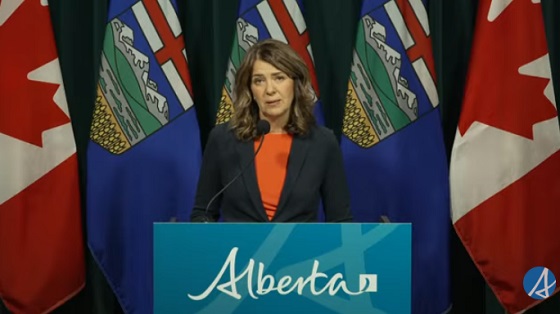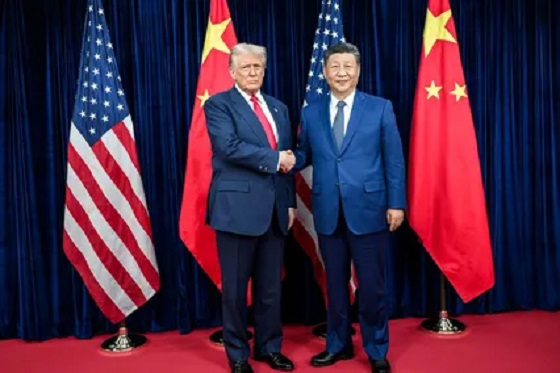Alberta
Alberta government must do more to avoid red ink

From the Fraser Institute
By Tegan Hill
As Albertans look toward a new year, it’s worth reviewing the state of provincial finances. When delivering news last month of a projected $4.6 billion budget surplus for fiscal year 2024/25, the Smith government simultaneously warned Albertans that a budget deficit could be looming. Confused? A $4.6 billion budget surplus sounds like good news—but not when its on the back of historically high (and incredibly volatile) resource revenue.
In just the last 10 years, resource revenue, which includes oil and gas royalties, has ranged from a low of $3.4 billion in 2015/16 (inflation-adjusted) to a high of $26.1 billion in 2022/23. Inflation-adjusted resource revenue is projected to be relatively high in historical terms this fiscal year at $19.8 billion.
Resource revenue volatility is not in and of itself a problem. The problem is that provincial governments tend to increase spending when resource revenue is high, but do not similarly reduce spending when resource revenue declines.
Overall, in Alberta, a $1 increase in inflation-adjusted per-person resource revenue is associated with an estimated 56-cent increase in program spending the following fiscal year, but a decline in resource revenue is not similarly associated with a reduction in program spending. Over time, this pattern has contributed to historically high levels of government spending that exceed ongoing stable levels of government revenue.
And while the Smith government has shown some restraint, spending levels remain significantly higher than reliable ongoing levels of government revenue. Put simply, unpredictable resource revenue continues to help fund Alberta’s spending—and when resource revenues inevitably fall, Alberta is at high risk of plummeting into a deficit.
Indeed, Finance Minister Nate Horner continues to emphasize that we are “living in extremely volatile times” and warning that if oil prices fall below $70.00 per barrel a budget deficit is “very likely.” According to recent forecasts, the price of oil may hit $66.00 per barrel in 2025.
To avoid this fate, the Alberta government must do more to rein in spending. Fortunately, there’s plenty of options.
For example, the government spends billions in subsidies (a.k.a. corporate welfare) to select industries and businesses every year. A significant body of research shows these subsidies fail to generate widespread economic benefits. Eliminating this corporate welfare, which would generate significant savings in the budget, is a good place to start.
If the Smith government fails to rein in spending, and Alberta incurs a budget deficit, it will only mean more government debt on the backs of Albertans. And with Albertans already paying approximately $650 each in provincial government debt interest each year, that’s something Albertans simply can’t afford.
With a new year set to begin, the Smith government continues to warn of a budget deficit. But rather than simply prepare Albertans for more debt accumulation—financed by their tax dollars—the government should do more to avoid red ink. That means cutting wasteful government spending.

Tegan Hill
Director, Alberta Policy, Fraser Institute
Alberta
From Underdog to Top Broodmare

WATCH From Underdog to Top Broodmare (video)
Executive Producers Jeff Robillard (Horse Racing Alberta) and Mike Little (Shinelight Entertainment)
What began as an underdog story became a legacy of excellence. Crackers Hot Shot didn’t just race — she paved the way for future generations, and in doing so became one of the most influential producers the province has known.
The extraordinary journey of Crackers Hot Shot — once overlooked, now revered — stands as one of Alberta’s finest success stories in harness racing and breeding.
Born in humble circumstances and initially considered rough around the edges, Crackers Hot Shot overcame long odds to carve out a career that would forever impact the province’s racing industry. From a “wild, unhandled filly” to Alberta’s “Horse of the Year” in 2013, to producing foals who carry her spirit and fortitude into future generations.
Her influence ripples through Alberta’s racing and breeding landscape: from how young stock are prepared, to the aspirations of local breeders who now look to “the mare that did it” as proof that world-class talent can emerge from Alberta’s paddocks.
“Crackers Hot Shot, she had a tough start. She wasn’t much to look at when we first got her” — Rod Starkewski
“Crackers Hot Shot was left on her own – Carl Archibald heard us talking, he said ‘I’ll go get her – I live by there’. I think it took him 3 days to dig her out of the snow. She was completely wild – then we just started working on her. She really needed some humans to work with her – and get to know that people are not scary.” — Jackie Starkewski
“Crackers Hot Shot would be one of the top broodmares in Albeta percentage wise if nothing else. Her foals hit the track – they’re looking for the winners circle every time.” — Connie Kolthammer
Visit thehorses.com to learn more about Alberta’s Horse Racing industry.
Alberta
Province orders School Boards to gather data on class sizes and complexity by Nov 24

Better data, better outcomes for Alberta students |
To help schools address classroom complexity, Alberta’s government will begin collecting annual data on class size and composition.
Over the past three years, Alberta has welcomed more than 80,000 new students. With this unprecedented growth, classroom complexity and class sizes are among the biggest issues facing schools and teachers across the province.
To meet this challenge head on, Alberta’s government will work with school boards to gather yearly data on class sizes and composition. This information will be used to better understand staffing, student needs and classroom complexity. School boards will be required to submit data on Alberta classrooms by Nov. 24, and by January, this data will be made publicly available and will then be released annually.
Data collected on classroom complexity will help the province understand and address issues in schools, including class sizes, and support strategic investments in classrooms. Over the next three years, school boards will be provided with funding to hire 3,000 teachers and 1,500 new education assistants to support students with complex needs.
“We are ready to work with school boards and teachers to address classroom complexity and class sizes. We have heard them loud and clear and we are taking bold action to address these issues.”
Alberta’s government is establishing a Class Size and Complexity Task Force to begin work immediately on identifying solutions to the challenges facing Alberta classrooms. Alongside new annual data collection, the task force will ensure every student gets the attention and support they need to succeed. Details about the task force will be shared in the coming weeks.
“This data will provide essential insight into classroom realities, guiding evidence-based decisions and advocating for sustainable funding to address complexity, ensuring every student and educator in Alberta has the support to thrive.”
Quick facts
To inform decisions on addressing classroom complexity, data will be collected on total numbers of:
- all staff, per school, including roles
- substitute teachers
- district staff, listed by job title
- students, per classroom, per school
- severe, mild/moderate, and gifted/talented students, per classroom, per school
- English as an additional language (EAL) students, per classroom, per school
- refugee students, per classroom, per school
- First Nations, Métis and Inuit students, per classroom, per school
- Individualized Program Plans, per classroom, per school
- students waitlisted for assessment, per classroom, per school
- incidents of aggression and violence
- $55 million was provided in Budget 2025 to address classroom complexity.
- 8.6 billion is being invested to build and renovate more than 130 schools across the province.
- Budget 2025 is investing $1.6 billion in learning support funding to help meet students’ specialized learning needs.
- Budget 2025 is investing $1.1 billion to hire more than 4,000 teachers and educational staff.
-

 Alberta17 hours ago
Alberta17 hours agoFrom Underdog to Top Broodmare
-

 International1 day ago
International1 day agoPrince Andrew banished from the British monarchy
-

 Business1 day ago
Business1 day ago“We have a deal”: Trump, Xi strike breakthrough on trade and fentanyl
-

 Business2 days ago
Business2 days agoCanada’s attack on religious charities makes no fiscal sense
-

 Alberta1 day ago
Alberta1 day agoProvince orders School Boards to gather data on class sizes and complexity by Nov 24
-

 Bruce Dowbiggin2 days ago
Bruce Dowbiggin2 days agoGet Ready: Your House May Not Be Yours Much Longer
-

 Crime1 day ago
Crime1 day agoCanada Seizes 4,300 Litres of Chinese Drug Precursors Amid Trump’s Tariff Pressure Over Fentanyl Flows
-

 National1 day ago
National1 day agoWatchdog Presses Ottawa to Release Hidden Lobbying Rulings










